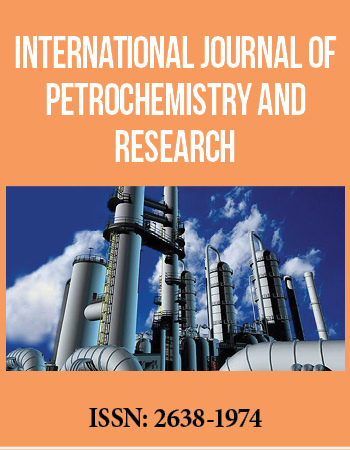Research Article
Oil and Gas Industry of Russia: Sanctions as an impetus to development
Associate Professor, PhD of Economics, Gubkin Russian State University of Oil and Gas (National Research University), Financial Management Department, Moscow, Russia
*Corresponding author: Liudmila Berezhnaia, Associate Professor, PhD of Economics, Gubkin Russian State University of Oil and Gas (National Research University), Financial Management Department, Moscow, Russia, E-mail: berezhnayali@ya.ru
Received: July 14, 2017 Accepted: July 22, 2017 Published: July 28, 2017
Citation: Berezhnaia L. Oil and Gas Industry of Russia: Sanctions as an impetus to development. Int J Petrochem Res. 2017; 1(2): 87-91. doi: 10.18689/ijpr-1000115
Copyright: © 2017 The Author(s). This work is licensed under a Creative Commons Attribution 4.0 International License, which permits unrestricted use, distribution, and reproduction in any medium, provided the original work is properly cited.
Keywords: Oil and Gas; hydrocarbon; Chemical products
Russia is a country with a rich base of mineral resources. Proven recoverable oil
reserves are estimated as 11 billion tons [1]. Russia retains one of the first places in the
world in oil production. Overall oil production as of 2016 was equal to 548 million tons. The position of Russia as the largest exporter remains unchanged. In 2016, export of oil
amounted to 254.8 million tons, with 284 million tons of processing [2].
The share of the five largest Russian oil companies ("Rosneft", "LUKOIL", "Gazprom
Neft", "Tatneft", and "Surgutneftegaz") accounts for over 80% of oil production in the
country.
Russian has proven natural gas reserves of 48.7 trillion cubic meters. It is about 25% of total world reserves [3]. The gas industry employs about 256 companies, including:
- 140 are independent production companies
- 100 are included in the structure of vertically integrated oil companies
- 16 make part of "Gazprom". Their share is more than 75% of gas production in
the country.
Overall gas production as of 2016 was 640 billion cubic meters, including 74.3 billion
cubic meters of processing and 198.7 trill. cubic meters of export in totaling to $31.374
billion [4]. At present, key consumers of Russian oil and gas are the countries of Western
Europe.
As of today, oil and gas companies are one of the main sources of replenishment for
the country. Their share in revenues of the Federal budget for a long time has been
about 50%. However, following the collapse of prices in mid-2014, the share of oil and
gas sector in the formation of revenues of the Federal budget reduced from 51.3% to
36% under the influence of falling prices on hydrocarbon raw materials and processed
products, and due to the intensification of activity of the enterprises of the non-oil
sector and the service [5].
It should be noted that in the consolidated budget, which also includes regional
budgets and revenues of the insurance funds, the share of oil revenues is almost twice
lower and for the period 2014-2016 it decreased from 27.8% to 17.2 [6]. This suggests
that the Russian economy is sufficiently diversified and is able to withstand low prices for
hydrocarbons at the expense of other sources of income.
The aim of this work is to analyze the actions taken by the
Russian government and oil companies, which in difficult
economic conditions provide the vital functions of the oil and
gas industry. With the fall in oil prices and imposition of
economic and technological sanctions against Russia, there
emerged difficulties, which involve both businesses and
government.
What can the state do?
The main lever of state influence on the activities of
commercial enterprises is tax regulation. The state, depending
on the objectives of the oil industry, adjusts tax legislation, directing the activities of the companies in the right way. The principal taxes payable by oil and gas sector are a Tax
on Mineral Extraction (MET) and Customs duty. The tax system
in oil industry is specific and structured in such a way that
allows to adjust the amount of tax deductions depending on
the price of oil (Fig.1)
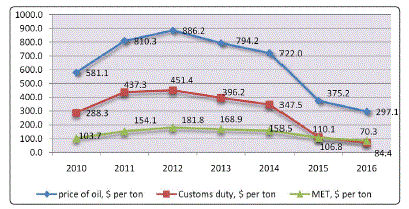
Figure 1. Dependence of Customs duty and Mineral Extraction Tax on oil price dynamics
While oil prices decline, the tax burden of enterprises
decreases, with increasing oil prices it goes up as well. At a
price below $ 15/bar., Customs duty and Tax on Mineral
Extraction becomes zero. Such a flexible approach allows to
establish mutually beneficial relationships between the main
participants in the oil business: the state, owner of the mineral
resources, and oil companies.
What is tax reform? During the last few years, Russia has
carried out tax reforms in the oil sector. The essence of tax
reform is the decrease in Customs duty while increasing the
Mineral Extraction Tax. We can observe a maneuver between
the two fundamental taxes.
There are three stages of the tax maneuver:
Stage 1 (2012-2013). The task was the fight against the
"black oil" scheme. Therefore, the rate of state of export duty
on crude oil was reduced from 65 to 60%. Companies directed
additional foreign currency funds to finance the modernization
of the refinery by reducing customs duties.
Stage 2 was planned for 2014 -2016 for the implementation
of the tasks, and it aimed to provide future gradual reduction
of export duty from 60% to 55%. Nevertheless, since the oil
prices fell in the middle of 2014, Russian government had to
move to Stage 3 in 2015-2017, executing the so-called "Big
Tax Maneuver" The goal of Stage 3 is to maximize foreign exchange earnings
in the companies under the limited opportunities to borrow
funds on global financial markets due to the imposition of
economic sanctions. As a result, for the period 2015-2017 a sharp
decrease in Customs duty rate from 59% in 2014 to 42% in 2015
was foreseen, and in the two coming years it had to constitute
36% and 30% [7]. Figure 2 shows the dynamics of rates of
customs duties. Implementation of actions of Stage 3 allowed
the government to reduce sharply its share in foreign exchange
earnings, and thereby to create favorable conditions for business.
What is the benefit received from the tax maneuver? As
shown by the calculations for two years of the new tax
regulator, extra income of companies is estimated at 12.5
billion dollars. The «price of maneuver» for the budget is the
reduction of foreign exchange earnings from oil and gas
business by 20%.
At the same time, the government increases Mineral
Extraction Tax, calculated in rubles, from 493 rubles per ton in
2014 to 919 rubles per ton in 2017 [7]. Figure 3 shows the
dynamics of rates of tax on extraction of mineral.
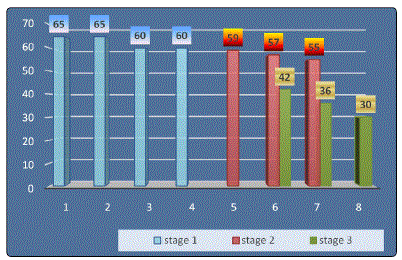
Figure 2. Dynamics of Customs duty rates, %
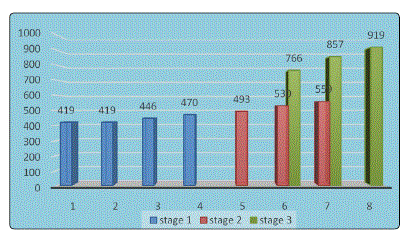
Figure 3. Dynamics of Mineral Extraction Tax rates, rub.per ton
Moreover, simultaneously with the fall in oil prices, the
government has implemented a devaluation of the ruble. The
Central Bank of Russia introduces almost a parity between
changes in oil prices and the exchange rate of the ruble
against the U.S. dollar.
As a result, following the decline in oil prices and, accordingly, foreign exchange earnings of companies, the
dollar has increased. Figure 4 shows the trend of ruble and oil
prices changes. The lower oil price is, the weaker the ruble is.
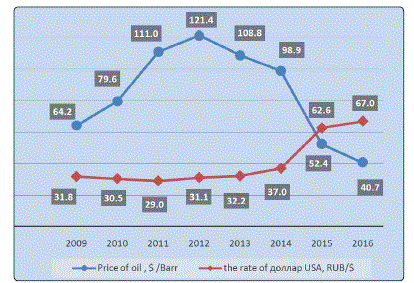
Figure 4. Dependence of the ruble on the oil price
What was the Russian benefit from the devaluation of the
ruble? Conversion of foreign currency revenues into rubles
has allowed increasing funds from enterprises and state in 1.8
times. As a result, the government by increasing the amount
of money corrects the balance of payments of Russia. In
addition, the increase of the ruble mass allows companies to
maintain their production capacity and to continue to
implement the already launched projects. Additional benefits
from the conversion of the ruble companies received upon
payment of the MET – the tax the state increased during the
implementation of the tax maneuver.
What is the benefit received from the tax maneuver? On
the one hand, by lowering export taxes reduced deductions
to the state budget of revenues obtained from exports, on the
other - an increasing share of foreign exchange for business. These additional funds, the companies aimed at the solution
of current tasks, including the completion of a previously
initiated process of modernization of the refinery. At the same
time the missing part of the Federal budget revenues to some
extent offsets the second tax, namely, increased almost 1.7
times the tax on extraction of mineral resources.

Table 1. reflects the impact of regulatory actions by the state to ensure the functioning of oil companies in the crisis. Table 1. Impact of regulatory actions by the state to ensure the functioning of oil companies in 2014-2016
While in fact the average price of 1 barrel of oil on the
world market from 2014 to 2016 decreased in 2.43 times, in
ruble terms the decline amounted to less than 1.4 times.
In addition, with declining oil prices, the tax burden on
companies is reduced. So, in 2014, when the price of oil was at
$ 100 per barrel, with each ton of exported oil, the state has
transferred 70% of revenue, while in the next two years, following the decline of prices, the state's share is reduced to
58 and 52%.
under the preferential ensure taxation the main growth of oil
production. Easing the tax burden contributes to the
development of small and medium-sized fields, fields with
hard to recover reserves, new deposits in the East of the
country, and allows cost-effective development of
hydrocarbons in depleted fields. Preferential oil volume in
2016 exceeded 190 million tons, accounting for about 35% of
total production in Russia.
According to the experts at the Investment Bank Goldman
Sachs, the return of the Russian oil and gas projects improves
due to the favorable tax regime. "According to our estimates, a typical Russian oil field can generate positive cash flow, provided that the price of oil remains above $10 per barrel", state the experts of the Bank [8].
Many of the projects associated with the need to
attract large investments were suspended due to
limited financial possibilities.
• Throughout exploration reduced, that threatened a
total loss of exploration.
• A particular problem for the petroleum industry in
Russia was the lack of its own technologies and
equipment for oil production in complicated
conditions. By the moment of the sanctions
Imposition, the share of foreign equipment in the
domestic oil and gas industry sector was estimated in
the range of 80% [9].
• Currently enterprises rely mainly on domestic
borrowing due to imposed sanctions. Investments
coming from the global financial market are not
significant.
What are companies doing?
Under the conditions of aggressive geopolitical situation, companies have a serious focus on internal improvements. Many domestic plants, scientific organizations offer their
latest innovative developments, which are not only not inferior
to the world analogues, but in many performance
characteristics superior to them.
Import substitution is a priority in the development of oil
and gas corporations. Import substitution is not only the
creation of new equipment and technologies, it is an
opportunity for domestic producers to compete with Western
companies.
Innovation has allowed «Gasport» to go back from the
supply of large diameter pipes German and Japanese
manufacturers, according to the Russian Association of
manufacturers of tubes.
Chemical products continue to displace imports from the
country. To the greatest extent import substitution has
occurred in the line of pharmaceutical products, which
switched to an international standard of production and
quality control of medicines.
Analysts of Bloomberg acknowledged that the food
embargo on imported products has become a driver for the
development of Russian agriculture, the country turns into a
"food colossus". Thus, recognizes the edition, import
substitution has made Russia the largest exporter of wheat, leaving behind United States of America, which already brings
a much higher income country than the production of "black
gold" or even the sale of weapons [10].
The substitution gave new jobs to Russian enterprises and
opened up great prospects for industry and agriculture. It is
not surprising that unemployment in Russia is now at a very
low level of 5.2% [11].
Companies continue to implement the earlier projects, and at the same time to develop new ones. They upgraded
the refinery to produce gasoline, the quality of which meets
the world standards. In the Russian North oil shipping through
the commissioned marine terminal "Gate of the Arctic" was
launched. It is a unique construction: oil shipment through the
Arctic terminal is carried out all year-round. The terminal may
operate at a temperature of 50 degrees Celsius below zero. The 100km pipeline connects the deposit and the terminal.
Oil and gas companies continue exploration and
development of hydrocarbon reserves in the Arctic. At present, more than 90% of gas and about 10 % of oil are provided by
the fields in the Russian sector of the Arctic [12].
PJSC "Gazprom" signed a major contract for the
construction of installations for the processing of arctic heavy
hydrocarbon fields in Western Siberia On the territory of the
Tyumen region there are large investment projects in the field
of refinery: Antipinsky oil refinery and the Tobolsk site SIBUR. Companies switch from production of crude oil to its
processing and obtaining the finished product with the aim of
increasing the profitability of the industry.
Eastern regions played an important role in stabilizing the
oil industry, where there is an active development of oil
reserves at new fields. Oil production from new fields in
Eastern Siberia amounted in 2016 to 54 million tones.
The construction of transport infrastructure turned out to
be a powerful incentive to the development of the resource
base and of oil production in Eastern Siberia and the Far East. Infrastructure projects include, for instance, the trunk pipeline
Eastern Siberia-Pacific Ocean (ESPO) and the specialized sea
oil port in Kozmino, the network lead and the connecting
pipelines from fields in Eastern Siberia to the ESPO pipeline, as
well as from fields of Sakhalin island to the port of De Kastri.
The presence of significant resource potential, transport
network and proximity to fast-growing Asia-Pacific markets
determine investment attractiveness of Eastern regions of
Russia. 'Rosneft' has meaningful points of interest in Eastern
Siberia and the Far East. To be more specific, it owns the license
to develop the largest deposits of Vankor and Verkhnechonsk. In the Far East the first turn of shipbuilding complex "Zvezda"
was put into operation, which should provide an impetus for
economic development of the whole Far Eastern region. The
company is actively working on the project "Far East Liquid natural gas (LNG)", believing it to be very promising.
"Surgutneftegaz" company has 24 licenses in Eastern
Siberia for areas in Yakutia, Irkutsk region and Krasnoyarsk
region. LUKOIL company outbid "Rosneft" and received the
first license for the subsoil use in Eastern Siberia, which opens
the new prospects to the company.
Gazprom rapidly carries out construction of the pipeline
"Power of Siberia" for gas supplies from Russia to China. By
the end of 2017, it is planned to increase the length of the
pipeline up to 1100 km and approach the border with China. The Asia-Pacific region is the Gazprom's traditional market for
the supply of liquefied natural gas. In 2016, 2.8 million tons of
LNG were sold to the Asian market.
Foreign investors are interested in the Eastern Siberia and
the Far East that was confirmed by their attention to the
Eastern economic forum (WEF). The previous Forum, held in
2016, gathered 4-6 thousand representatives of business, experts and scientific community representatives from 56
countries. There were signed contracts to the amount of 1.63
billion rubles. In September 2017, in the capital of Primorye
Vladivostok, on Russky island, there will be held the Third
International Economic Forum, where the presence of highlevel
governmental officials of China, Japan, South Korea, and
Vietnam is planned. In addition to the Pacific Rim countries, an application for participation was received from Australia, Canada and the United States of America, and European
countries, including the UK, Germany and others [13].
Lessons learned
The past few years tested the strength of the Russian
economy, allowing it to feel its dependence on the commodity
sector and an unacceptable backlog in many areas of scientific
and technological progress of the world level.
The country has, given the realities of the present day, to
learn how to counter geopolitical threats to real actions aimed
at stimulating growth and ensuring long-term sustainability
of the national economy.
Despite the fact that the Russian budget still depends
largely on oil and gas revenues, it is necessary to establish
changes in the structure of its content. Russia managed to
establish mechanisms to limit public spending and to improve
the efficiency of the tax system that allows every year to
increase the percentage of income not related to the sale of
hydrocarbons, confirm analysts of Forbes.
For the second year in a row, Russia maintains the leading
positions in the world oil production. In 2016, the volume of
oil with gas condensate reached 547.5 million tons, renewing
the record of the previous year. Gas production in 2016
increased by 0.7% and amounted to 640.007 billion cubic
meters. Volumes of geological exploration and production
drilling are growing. Capital investments in the oil and gas
sector are constantly increasing, and in 2016, investment
increased by 12% and amounted to 1200 billion rubles.
In order to avoid stagnation and promote further
development, it is crucial that Russia perceives sanctions as an
impulse to the revival of its oil and gas industry.
References
- Proven oil Reserves in the world. World Factbook. Accessed February 5, 2017.
- On the state of the oil market in 2016. Accessed April 7, 2017.
- The proven gas reserves of countries in 2016. Accessed February 5, 2017
- Gas production in Russia in 2016. Accessed April 24, 2017.
- On execution of the Federal budget for January-December 2016. Accessed June, 2017.
- Brief information on execution of the consolidated budget of the Russian Federation. Accessed 30 June, 2017.
- Goldman Sachs: Russian field on average is profitable if the price is above $10 per barrel. Accessed September 15, 2016.
- The share of imported equipment in the oil and gas industry. Accessed December 22, 2014.
- Bloomberg amazed: agriculture of the Russian Federation grows on predamage by leaps and bounds. Accessed January 11, 2017.
- The levels of unemployment in 2016. Accessed July 01, 2017.
- Kontorovich AE. Oil and gas in the Russian Arctic: the history of development in the twentieth century, resources, strategy for the twenty-first century. Science first hand. Our Arctic. 2015; 41(N2): 46-66.
- Korzinkina S. Delegations from 24 countries have confirmed their participation in the WEF-2017. Accessed July 12, 2017.

